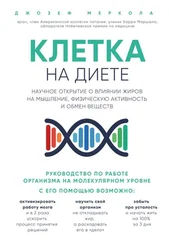126. Mamalakis G, Kalogeropoulos N, Andrikopoulos N, et al. Depression and long chain n-3 fatty acids in adipose tissue in adults from Crete. Eur J Clin Nutr . 2006 Jul; 60 (7): 882–888.
127. Zanarini MC, Frankenburg FR. Omega-3 fatty acid treatment of women with borderline personality disorder: a double-blind, placebo-controlled pilot study. Am J Psychiatry . 2003 Jan; 160 (1): 167–169.
128. Assies J, Lieverse R, Vreken P, et al. Significantly reduced docosahexaenoic and docosapentaenoic acid concentrations in erythrocyte membranes from schizophrenic patients compared with a carefully matched control group. Biol Psychiatry . 2001 Mar 15; 49 (6): 510–522.
129. Hamazaki T, Sawazaki S, Itomura M, et al. Effect of docosahexaenoic acid on hostility. World Rev Nutr Diet . 2001; 88: 47–52.
130. Mamalakis G, Kafatos A, Tornaritis M, et al. Anxiety and adipose essential fatty acid precursors for prostaglandin E1 and E2. J Am Coll Nutr . 1998 Jun; 17 (3): 239–243.
131. Shakeri J, Khanegi M, Golshani S, et al. Effects of omega-3 supplement in the treatment of patients with bipolar I disorder. Int J Prev Med . 2016 May 19; 7: 77.
132. Vesco AT, Lehmann J, Gracious BL, et al. Omega-3 supplementation for psychotic mania and comorbid anxiety in children. J Child Adolesc Psychopharmacol . 2015 Sep 1; 25 (7): 526–34.
133. Cott J, Hibbeln JR. Lack of seasonal mood change in Icelanders. Am J Psychiatry . 2001 Feb; 158 (2): 328.
134. Wong-Ekkabut J, Xu Z, Triampo W, et al. Effect of lipid peroxidation on the properties of lipid bilayers: a molecular dynamics study. Biophys J .2007 Dec 15; 93 (12): 4225–4236.
135. Spiteller G. Peroxyl radicals: inductors of neurodegenerative and other inflammatory diseases. Their origin and how they transform cholesterol, phospholipids, plasmalogens, polyunsaturated fatty acids, sugars, and proteins into deleterious products. Free Radic Biol Med . 2006 Aug 1; 41(3): 362–387.
136. Там же.
137. Там же.
138. Moran JH, Mon T, Hendrickson TL, et al. Defining mechanisms of toxicity for linoleic acid monoepoxides and diols in Sf-21 cells. Chem Res Toxicol . 2001 Apr; 14 (4): 431–437.
139. Montine TJ, Amarnath V, Martin ME, et al. E-4-hydroxy-2-nonenal is cytotoxic and cross-links cytoskeletal proteins in P19 neuroglial cultures. Am J Pathol . 1996 Jan; 148 (1): 89–93.
140. Best KP, Gold M, Kennedy D, et al. Omega-3 long-chain PUFA intake during pregnancy and allergic disease outcomes in the offspring: a systematic review and meta-analysis of observational studies and randomized controlled trials. Am J Clin Nutr . 2016 Jan; 103 (1): 128–143.
141. Там же.
142. Там же.
143. Maslova E, Strom M, Oken E, et al. Fish intake during pregnancy and the risk of child asthma and allergic rhinitis – longitudinal evidence from the Danish National Birth Cohort. Br J Nutr . 2013 Oct; 110 (7): 1313–1325.
144. Nwaru BI, Erkkola M, Lumia M, et al. Maternal intake of fatty acids during pregnancy and allergies in the offspring. Br J Nutr . 2012 Aug; 108 (4): 720–732.
145. Jedrychowski W, Perera F, Maugeri U, et al. Effects of prenatal and perinatal exposure to fine air pollutants and maternal fish consumption on the occurrence of infantile eczema. Int Arch Allergy Immunol . 2011; 155 (3): 275–281.
146. Willers SM, Devereux G, Craig LC, et al. Maternal food consumption during pregnancy and asthma, respiratory and atopic symptoms in 5-year-old children. Thorax . 2007 Sep; 62 (9): 773–779.
147. Janakiram NB, Mohammed A, Rao CV. Role of lipoxins, resolvins, and other bioactive lipids in colon and pancreatic cancer. Cancer Metastasis Rev . 2011 Dec; 30 (3–4): 507–523.
148. Gonzalez MJ, Schemmel RA, Gray JI, et al. Effect of dietary fat on growth of MCF-7 and MDA-MB231 human breast carcinomas in athymic nude mice: relationship between carcinoma growth and lipid peroxidation product levels. Carcinogenesis . 1991 Jul; 12 (7): 1231–1235.
149. Gonzalez MJ, Schemmel RA, Dugan L, Jr., et al. Dietary fish oil inhibits human breast carcinoma growth: a function of increased lipid peroxidation. Lipids. 1993 Sep; 28 (9): 827–832.
150. Hudson EA, Beck SA, Tisdale MJ. Kinetics of the inhibition of tumour growth in mice by eicosapentaenoic acid-reversal by linoleic acid. Biochem Pharmacol . 1993 Jun 9; 45 (11): 2189–2194.
151. Conklin KA. Dietary polyunsaturated fatty acids: impact on cancer chemotherapy and radiation. Altern Med Rev . 2002 Feb; 7 (1): 4–21.
152. Там же.
153. Там же.
154. Там же.
Глава седьмая
1. Ogden CL, Carroll MD, Kit BK, et al. Prevalence of obesity in the United States, 2009–2010. NCHS data brief . 2012 Jan: (82) 1–8.
2. Yki-Jarvinen H. Fat in the liver and insulin resistance. Ann Med . 2005; 37 (5): 347–356.
3. Jung SH, Ha KH, Kim DJ. Visceral Fat Mass Has Stronger Associations with Diabetes and Prediabetes than Other Anthropometric Obesity Indicators among Korean Adults. Yonsei Med J . 2016 May 1; 57 (3): 674–680.
4. Sheth SG, Chopra Sanjive. Epidemiology, clinical features, and diagnosis of nonalcoholic fatty liver disease in adults [Интернет]. UpToDate . 2018. Доступно по адресу http://www.uptodate.com/contents/epidemiology-clinical-features-anddiagnosis-of-nonalcoholic-fatty-liver-disease-in-adults.
5. Vernon G, Baranova A, Younossi ZM. Systematic review: the epidemiology and natural history of non-alcoholic fatty liver disease and non-alcoholic steatohepatitis in adults. Aliment Pharmacol Ther . 2011 Aug; 34 (3): 274–285.
6. Williams CD, Stengel J, Asike MI, et al. Prevalence of nonalcoholic fatty liver disease and nonalcoholic steatohepatitis among a largely middle-aged population utilizing ultrasound and liver biopsy: a prospective study. Gastroenterology . 2011 Jan; 140 (1): 124–131.
7. Menke A, Casagrande S, Geiss L, et al. Prevalence of and trends in diabetes among adults in the United States, 1988-2012. JAMA . 2015 Sep 8; 314 (1): 1021–1029.
8. Lopategi A, Lopez-Vicario C, Alcaraz-Quiles J, et al. Role of bioactive lipid mediators in obese adipose tissue inflammation and endocrine dysfunction. Mol Cell Endocrinol . 2016 Jan 5; 419: 44–59.
9. Там же.
10. Claria J, Nguyen BT, Madenci AL, et al. Diversity of lipid mediators in human adipose tissue depots. Am J Physiol Cell Physiol . 2013 Jun 15; 304 (12): C1141–1149.
11. Claria J, Dalli J, Yacoubian S, et al. Resolvin D1 and resolvin D2 govern local inflammatory tone in obese fat. J Immunol . 2012 Sep 1; 189 (5): 2597–2605.
12. Lopategi A, Lopez-Vicario C, Alcaraz-Quiles J, et al. Role of bioactive lipid mediators in obese adipose tissue inflammation and endocrine dysfunction. Mol Cell Endocrinol . 2016 Jan 5; 419: 44–59.
13. White PJ, Arita M, Taguchi R, et al. Transgenic restoration of long-chain n-3 fatty acids in insulin target tissues improves resolution capacity and alleviates obesity-linked inflammation and insulin resistance in high-fat-fed mice. Diabetes . 2010 Dec; 59 (12): 3066–30673.
14. Neuhofer A, Zeyda M, Mascher D, et al. Impaired local production of proresolving lipid mediators in obesity and 17-HDHA as a potential treatment for obesity-associated inflammation. Diabetes . 2013 Jun; 62 (6): 1945–1956.
15. Hellmann J, Tang Y, Kosuri M, et al. Resolvin D1 decreases adipose tissue macrophage accumulation and improves insulin sensitivity in obese-diabetic mice. FASEB J . 2011 Jul; 25 (7): 2399–2407.
Читать дальше
Конец ознакомительного отрывка
Купить книгу












